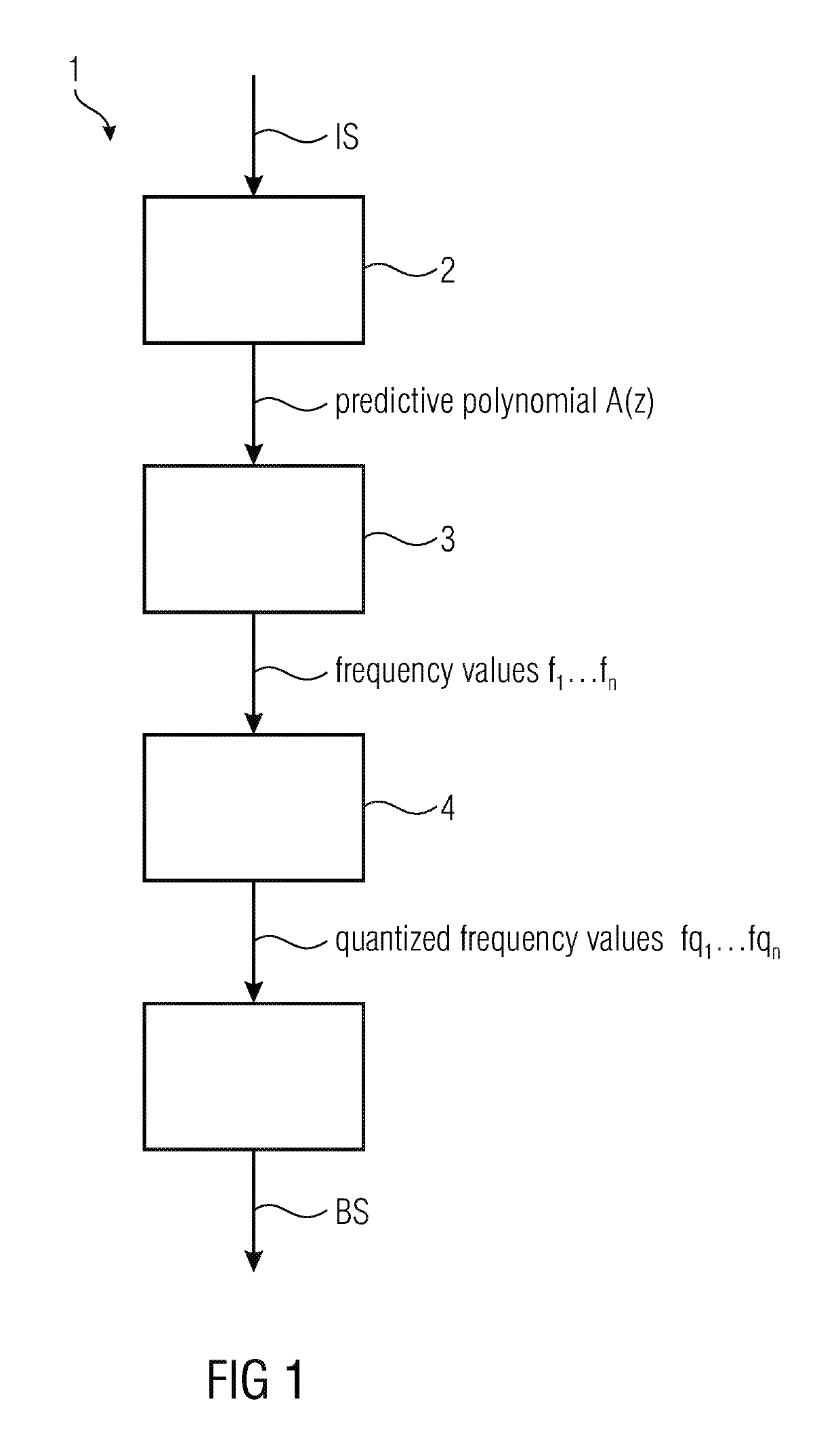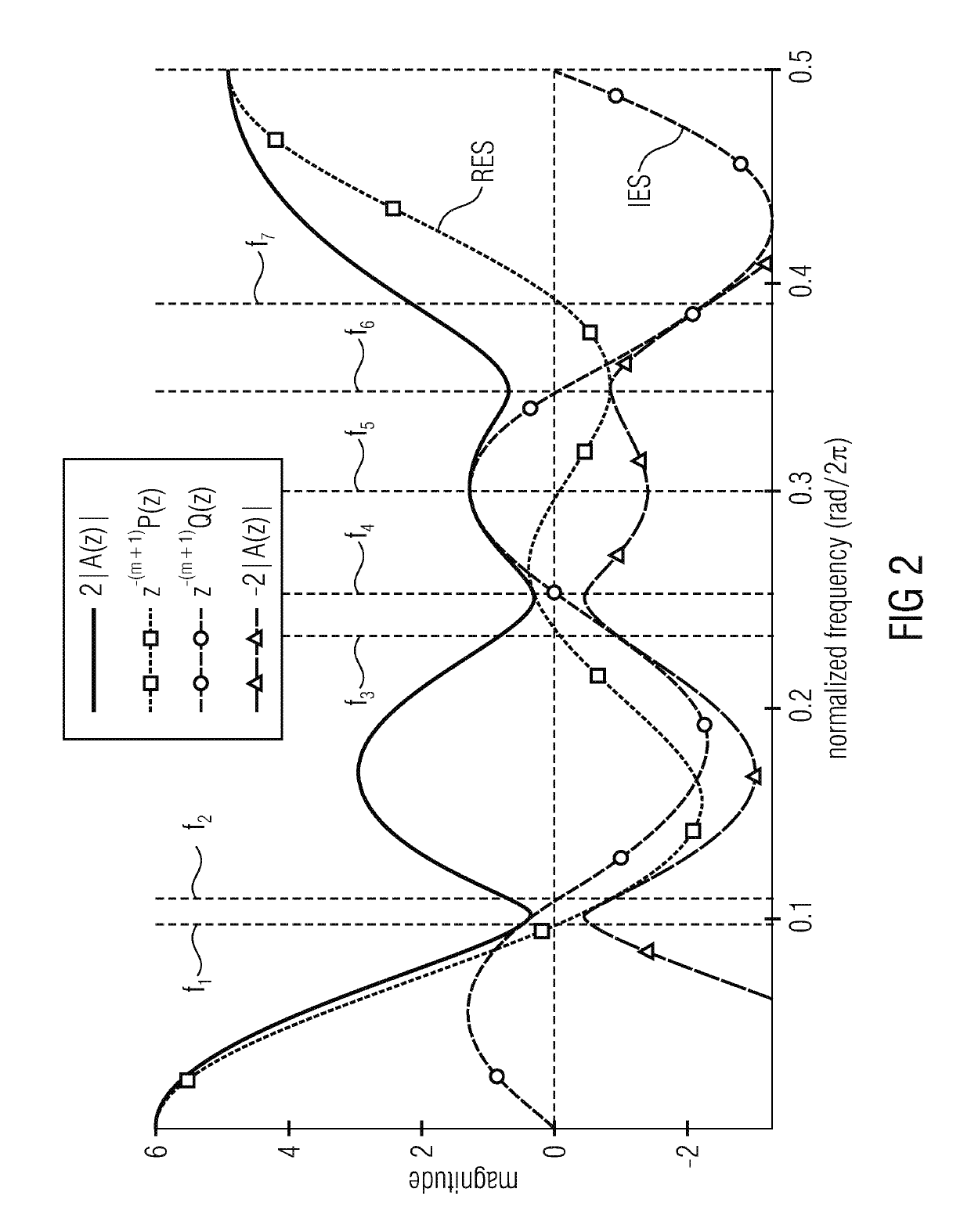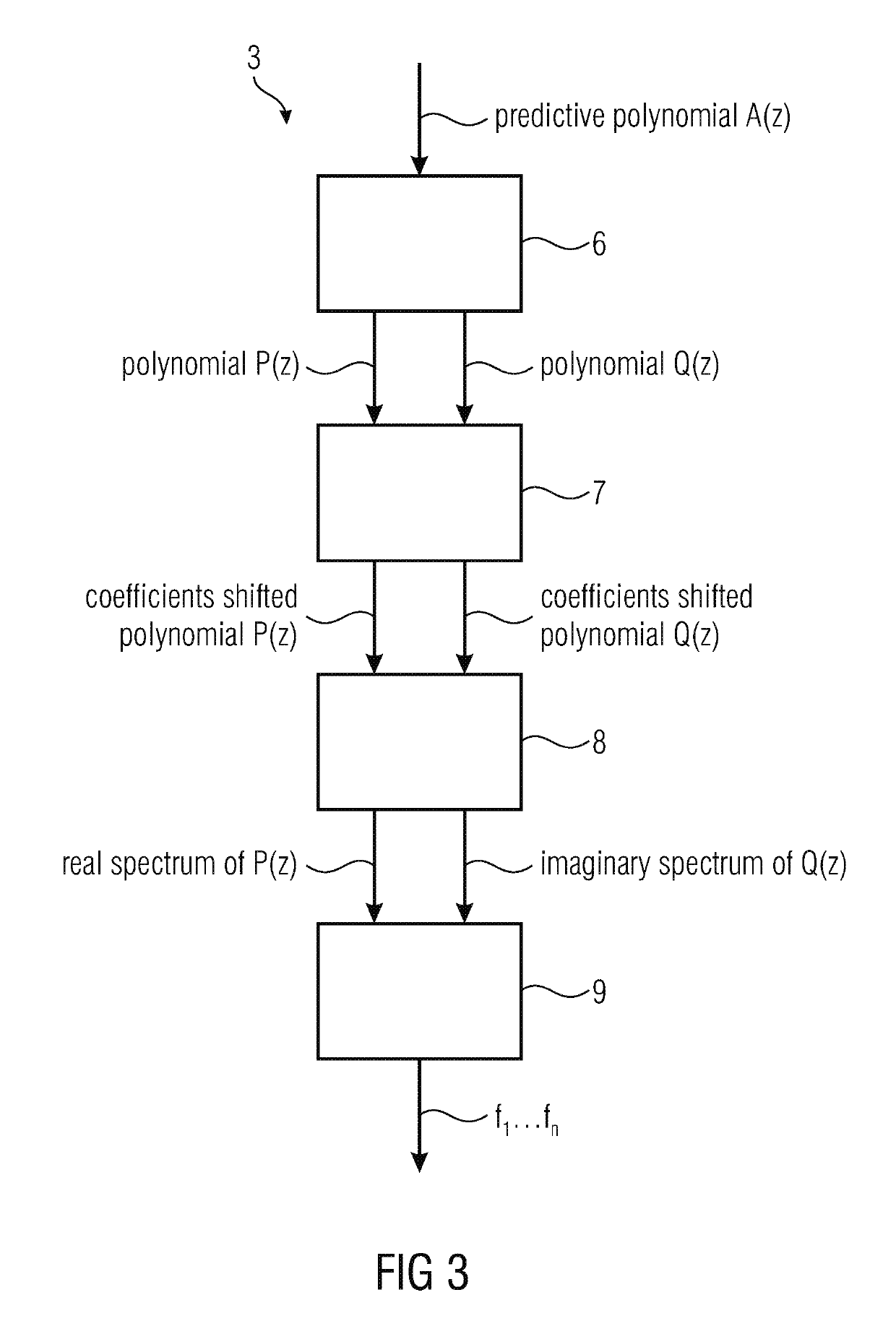Concept for encoding of information
a technology of information and encoding, applied in the field of information encoding, can solve the problems of poor accuracy, difficult to determine, and difficult to find the roots of polynomials, and achieve the effects of low computational complexity, high or better accuracy, and low computational complexity
- Summary
- Abstract
- Description
- Claims
- Application Information
AI Technical Summary
Benefits of technology
Problems solved by technology
Method used
Image
Examples
first embodiment
[0113]FIG. 3 illustrates the converter of the information encoder according to the invention in a schematic view.
[0114]According to an embodiment of the invention the converter 3 comprises a determining device 6 to determine the polynomials P(z) and Q(z) from the predictive polynomial A(z).
[0115]According to an embodiment invention the converter comprises a Fourier transform device 8 for Fourier transforming the pair of polynomials P(z) and Q(z) or one or more polynomials derived from the pair of polynomials P(z) and Q(z) into a frequency domain and an adjustment device 7 for adjusting a phase of the spectrum RES derived from P(z) so that it is strictly real and for adjusting a phase of the spectrum IES derived from Q(z) so that it is strictly imaginary. The Fourier transform device may 8 be based on the fast Fourier transform or on the discrete Fourier transform.
[0116]According to an embodiment of the invention the adjustment device 7 is configured as a coefficient shifter 7 for ci...
second embodiment
[0142]FIG. 4 illustrates the converter 3 of the information encoder 1 according to the invention in a schematic view.
[0143]According to an embodiment of the invention the converter 3 comprises a zero-padding device 10 for adding one or more coefficients having a value “0” to the polynomials P(z) and Q(z) so as to produce a pair of elongated polynomials Pe(z) and Qe(z). Accuracy can be further improved by extending the length of the evaluated spectrum RES, IES. Based on information about the system, it is actually possible in some cases to determine a minimum distance between the frequency values f1 . . . fn, and thus determine the minimum length of the spectrum RES, IES with which all frequency values f1 . . . fn, can be found [8].
[0144]According to an embodiment of the invention the converter 3 is configured in such way that during converting the linear prediction coefficients to frequency values f1 . . . fn, of a spectral frequency representation RES, IES of the predictive polynom...
third embodiment
[0155]FIG. 6 illustrates the converter 3 of the information encoder 1 according to the invention in a schematic view.
[0156]According to an embodiment of the invention the adjustment device 12 is configured as a phase shifter 12 for shifting a phase of the output of the Fourier transform device 8.
[0157]According to an embodiment of the invention the phase shifter 12 is configured for shifting the phase of the output of the Fourier transform device 8 by multiplying a k-th frequency bin with exp(i2πkh / N), wherein N is the length of the sample and h=(m+l) / 2.
[0158]It is well-known that a circular shift in the time-domain is equivalent with a phase-rotation in the frequency-domain. Specifically, a shift of h=(m+l) / 2 steps in the time domain corresponds to multiplication of the k-th frequency bin with exp(−i2πkh / N), where N is the length of the spectrum. Instead of the circular shift, one can thus apply a multiplication in the frequency-domain to obtain exactly the same result. The cost of...
PUM
 Login to View More
Login to View More Abstract
Description
Claims
Application Information
 Login to View More
Login to View More - R&D
- Intellectual Property
- Life Sciences
- Materials
- Tech Scout
- Unparalleled Data Quality
- Higher Quality Content
- 60% Fewer Hallucinations
Browse by: Latest US Patents, China's latest patents, Technical Efficacy Thesaurus, Application Domain, Technology Topic, Popular Technical Reports.
© 2025 PatSnap. All rights reserved.Legal|Privacy policy|Modern Slavery Act Transparency Statement|Sitemap|About US| Contact US: help@patsnap.com



